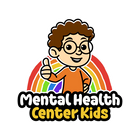|
Key Takeaways:
- Self-regulation helps children rebound from disappointment and overcome daily challenges.
- Most children develop self-regulation skills from infancy. By the time they’re preteens, they improve organizational skills and can manage multiple tasks.
- You can teach children self-regulation strategies through exercise, mindfulness, positive self-talk, and positive reinforcement.
|
It’s normal for young children to throw tantrums, especially when they haven’t learned to express their emotions. However, as children grow older, developing self-regulation strategies for kids is a must.
When children self-regulate, they can bounce back from tough situations by slowing down and reflecting on their thoughts. This article will dive deep into what it means to self-regulate, why it matters, and what strategies may work for your kids.
What is Self-Regulation?
Self-regulation in children involves managing thoughts, behaviors, and emotions to achieve long-term goals [*]. Through self-regulation, kids can stay focused, even in stressful situations.
Self-regulation is one of the five components of emotional intelligence, which dictates how well a child can recognize, interpret, and regulate their emotions. For example, self-regulation in children might look like observing their environment, understanding their reaction to a trigger, or adjusting their behavior after a stressful encounter.
Why is Self-Regulation Important in Kids?
Children need to practice self-regulation, as it helps them think things through and make a plan rather than reacting to a situation impulsively. Without self-regulation skills for kids, they can become easily frustrated and respond violently to unwanted outcomes.
When children prioritize learning to self-regulate, they are more confident and have higher self-esteem. They can stay true to their values and do the right thing, even when they’re tempted not to.
At What Age Do Kids Develop Self-Regulation?
Children develop basic self-regulation between the ages of 3 and 7 [*]. They experience the most rapid growth during preschool years.
However, children can already start learning to self-regulate when they are babies. They follow in the footsteps of their parents and the people around them.
A child’s relationship with their parents and early experiences can determine how well they self-regulate [*]. For example, children with warm and responsive relationships with their parents tend to learn to self-soothe and are flexible in changing situations.
When children reach preschool age, they start to understand their parents' expectations for them and are better at playing with other children. As preteens, they improve their ability to plan, manage multiple tasks, and behave appropriately in social situations.
What are the Signs of Poor Self-Regulation in Kids?
If a child experiences neglect or abuse, they don’t feel safe or secure and tend to struggle with self-regulation [*]. Poor self-regulation might also result from traumatic experiences or toxic relationships in school.
Other reasons your child might develop poor self-regulation include:
- Sudden changes to the child’s routine
- Chronic exhaustion and fatigue
- Long-term illnesses
- Significant traumatic events
- Co-occurring mental illnesses
These can lead to signs of poor self-regulation, including:
- Throwing frequent tantrums instead of trying to problem-solve
- Behaving rebelliously or dangerously
- Withdrawing socially and struggling to develop friendships
- Weak communication skills or inability to express feelings
- Extreme reactions to limits and rules
- Difficulty calming down without external soothing
- Poor task focus
- Acting argumentatively, defiantly, or aggressively
- Extreme mood swings and emotional volatility
Self-Regulation Strategies for Kids
Children don’t just “outgrow” tantrums and frustrations. In most cases, children must learn self-regulation skills at home and at school. Just learning how to help a child regulate their emotions? Here are some strategies to try.
1. Identifying emotions
When children can identify their emotions, they are more aware of their emotional state and can understand how these feelings influence their thoughts.
Identifying emotions early on can help children prevent them from escalating into tantrums or frustration. You can use our feelings and emotions charts to help children recognize their feelings.
2 Deep breathing
Using breathing exercises for kids is a quick and easy way to dispel negative thoughts and stay grounded during high-stress situations. Deep breathing can promote relaxation and manage stress responses.
Parents can employ more engaging versions of these techniques, such as rainbow or pinwheel breathing, when teaching young children.
3. Mindfulness
Recent reviews have found that mindfulness exercises, such as focused breathing and gratitude, can improve children's attention and executive function [*]. Through mindfulness, children consciously try to maintain moment-to-moment awareness and are more thoughtful about their actions.
4. Progressive muscle relaxation
Sometimes, emotional stress manifests physically. Progressive muscle relaxation (PMR) can help children break the cycle of anxiety and muscle tension.
Research shows that muscle relaxation can promote positive physiological changes, such as decreases in heart rate, blood pressure, and stress hormone levels [*]. These changes can help children maintain emotional equilibrium and take a more balanced approach to triggering situations.
5. Calm-down corner
Children can better process their emotions when they feel safe and supported. Providing a calm-down corner in your home or classroom can give them the space to recuperate and reflect.
Treat these corners like a sanctuary. Arrange your child’s favorite toys, calming visuals, a blanket, or a few pillows to provide comfort. Give your child a few minutes to gather themselves, then ask to join them. Guide them through their emotions by validating their feelings and asking open-ended questions.
6. Positive reinforcement
Positively reinforcing your child teaches them to manage their behaviors in ways that meet personal and social expectations. When using positive reinforcement, provide specific praise to encourage good behaviors.
For example, if your child walked away from an argument with their sibling, praise this action. Tell them, “I’m proud of you for walking away to avoid saying or doing something you might regret. That was very brave and kind of you!”
7. Positive self-talk
It isn’t uncommon for children to be hard on themselves when they fail or make mistakes. However, positive self-talk habits can help reframe negative thoughts and keep children from catastrophizing.
Start by introducing positive affirmations to help redirect your child’s negative thoughts. They can write these affirmations on sticky notes, their journal, or recite them out loud.
8. Reframing
Like positive self-talk, cognitive reframing aims to change negative thought patterns. However, instead of using affirmations, it involves reinterpreting a situation to help change your child’s emotional response.
For instance, suppose your child fails a test. They might beat themselves up by saying, “I’m too stupid. That’s why I failed.” Encourage them to reframe this thought by saying, “I didn’t do so well on this test, but I can try new study techniques to do better on the next one.”
9. Sensory breaks
Sometimes, children can’t self-regulate because they’re overstimulated. To relax, kids can take a sensory break from overwhelming stimuli.
Parents can introduce the concept of sensory breaks by including them in their child’s routine. For example, you might recommend a sensory break after school or before bed.
10. Exercise
Physical activity stimulates brain regions responsible for executive functions like attention, working memory, and impulse control. When children get regular exercise, they experience fewer symptoms of anxiety and depression, are more focused, and can process information thoroughly.
Simple ways to incorporate exercise into your child’s routine include structured movement breaks, which help reset attention and redirect focus. You can facilitate stretching or five minutes of deep breathing between tasks.
The Bottom Line
Self-regulation takes time and practice to develop. As your children learn to self-regulate, they become more resilient and self-reliant in hard times.
Use our coping skills worksheets to provide more support for your child.
Sources:
- Gillebaart M. “The “Operational” Definition of Self-Control.” Frontiers in Psychology, 2018.
- Montroy JJ, Bowles RP, Skibbe LE, McClelland MM, Morrison FJ. “The development of self-regulation across early childhood.” Developmental Psychology, 2016.
- Tao T, Wang L, Fan C, Gao W. “Development of self-control in children aged 3 to 9 years: Perspective from a dual-systems model.” Scientific Reports, 2014.
- Spratt EG, Friedenberg S, LaRosa A, et al. “The Effects of Early Neglect on Cognitive, Language, and Behavioral Functioning in Childhood.” Psychology, 2012.
- Leyland, A., Rowse, G., & Emerson, L.-M. “Experimental effects of mindfulness inductions on self-regulation: Systematic review and meta-analysis.” Emotion, 2019.
- Finsterer J, Stöllberger C. “Muscle Relaxation.” Elsevier eBooks, 2016.





















































